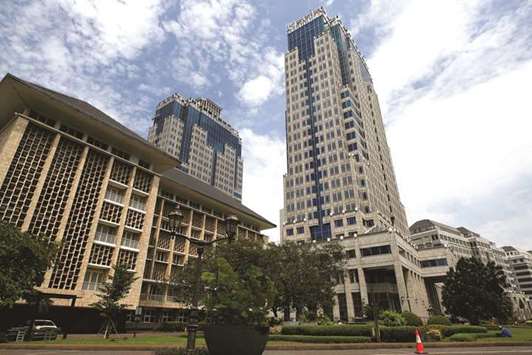Central banks in Indonesia and the Philippines – among Asia’s most aggressive interest-rate hikers this year – took more policy action on Thursday to shore up their currencies and tamp down inflation.
Bank Indonesia raised interest rates for a sixth time this year to 6%, catching almost all economists off guard. Bangko Sentral ng Pilipinas increased its benchmark for a fifth straight meeting to 4.75%, a move predicted by 11 of 19 economists in a Bloomberg survey.
The policy action underscores worries about inflation and currency risks even after recent signs that volatility on the world’s emerging markets was easing. Both the Philippines and Indonesia appear determined to stay ahead of the Federal Reserve, whose cycle of rate hikes is pushing down currencies in Asia and luring foreign capital away from the region. The Fed remains on course to lift interest rates for a fourth time this year in December.
“Financial conditions in Asia, and across emerging markets, are tightening in line with the US,” said Philip Wee, a currency strategist at DBS Group Holdings Ltd in Singapore. “The rate increases in the current-account deficit economies have been significant, but on balance, these adjustments are orderly.”
“As the Fed takes monetary policy into restrictive territory, we would reasonably expect EM central banks to be dragged along,” he said.
Indonesia and the Philippines, which have each raised their benchmark rates by 175 basis points since May, run current- account deficits, making them reliant on foreign inflows to fund their import needs.
That also means they are vulnerable to swings in investor sentiment, with Indonesia’s rupiah down about 7% against the dollar this year and the Philippine peso losing 5.3%.
“Indonesia’s central bank reverted to pre-emptive mode, tightening monetary policy further on Thursday, despite a recent bounce in the rupiah. The surprise move should help Bank Indonesia start to get ahead of outstanding vulnerabilities plaguing the currency”, says Tamara Henderson, Bloomberg Economics.
While both Indonesia and the Philippines are likely done raising rates this year, there’s more tightening to come in 2019 as global interest rates rise, said Nicholas Mapa, a senior economist at ING Group NV in Manila.
The Philippines is “open to hiking another 50 basis points over the policy horizon” while Bank Indonesia is set to “keep the finger on the trigger for more hikes going into 2019,” Mapa said, pointing to expectations the Fed will raise rates at least twice more next year.
The rupiah climbed almost 1% against the dollar on Thursday and was up 0.5% to 14,590 in Jakarta on Friday. The peso gained 0.2% to 52.69 against the dollar, heading for a sixth weekly gain.
Earlier this week, Sri Lanka’s central bank raised its key rate in a surprise move, while the Bank of Thailand kept rates unchanged but moved closer to a possible hike.
Bank Indonesia said the rate action was aimed at narrowing the current-account deficit after data on Thursday showed a worsening in the trade gap in October. The current-account shortfall reached 3.4% of gross domestic product in the third quarter. In the Philippines, policy makers are trying to bring inflation back into the 2% to 4% target after price-growth soared to 6.7% in October.
“Both central banks have obviously hiked despite oil prices coming off and currencies stronger, which shows discipline around policy settings and more medium-term policy objectives being kept in mind,” said Rahul Bajoria, a senior economist at Barclays Plc in Singapore.

A general view of Bank Indonesia’s headquarters in Jakarta. Central banks in Indonesia and the Philippines u2013 among Asia’s most aggressive interest-rate hikers this year u2013 took more policy action to shore up their currencies and tamp down inflation.
